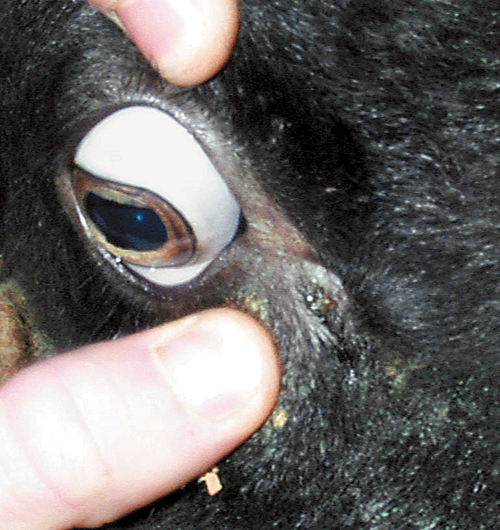Difference between revisions of "Sheep Medicine Q&A 06"
| Line 28: | Line 28: | ||
After 48 hr, treated sheep can then be turned out to pasture previously grazed by sheep to dilute out any eggs from surviving (resistant) worms. <br><br> | After 48 hr, treated sheep can then be turned out to pasture previously grazed by sheep to dilute out any eggs from surviving (resistant) worms. <br><br> | ||
Accurate dosage for the heaviest sheep in the group is essential. | Accurate dosage for the heaviest sheep in the group is essential. | ||
| − | |l3= Parasitic Gastroenteritis#Control | + | |l3= Parasitic Gastroenteritis#Treatment and Control |
</FlashCard> | </FlashCard> | ||
Latest revision as of 23:41, 5 August 2011
| This question was provided by Manson Publishing as part of the OVAL Project. See more Sheep questions |
In early autumn you are asked to examine some pedigree Suffolk rams which are in very poor condition (BCS 1.5, scale 1–5). The rams, purchased as yearlings, are grazing permanent pasture and were treated with albendazole (group 1 – benzimidazoles) in late spring and again 2 months later. Many rams have diarrhoea with considerable faecal staining of the perineum. The rams are bright and alert but in much poorer bodily condition than expected. A ram purchased last autumn is especially thin (BCS 1.0) and depressed with pale mucous membranes and slight submandibular oedema. The heart rate and respiratory rates are increased.
| Question | Answer | Article | |
| What conditions would you consider? | The most likely conditions to consider include:
|
Link to Article | |
| What tests would you undertake? | Further tests include collection of faeces samples for worm egg count. Faeces samples collected from the anaemic ram reveal an egg count of 42,000 epg. |
Link to Article | |
| What control measures would you adopt? | Control measures include strict quarantine of all purchased stock and treatment with both group 2 (mainly levamisole) and 3 (avermectin and milbemycin) anthelmintics upon arrival. |
Link to Article | |
